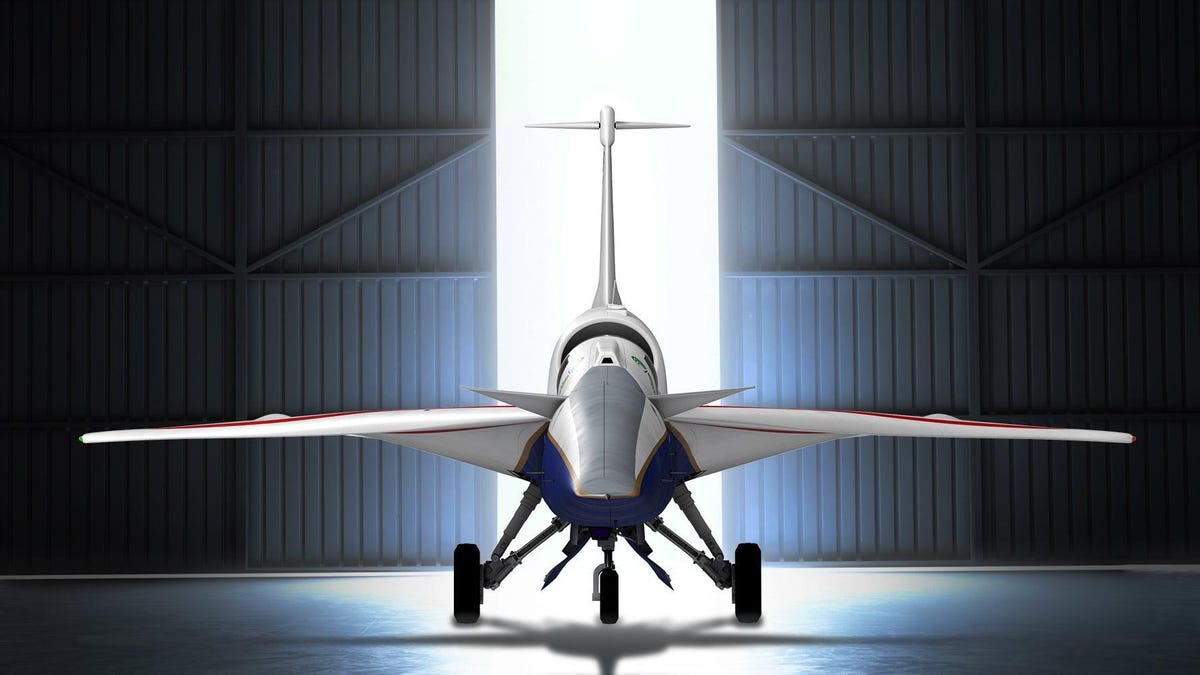NASA’s freshly painted X-59 aircraft will be rolled out of its hangar on Friday, January 12, in the lead-up to its first takeoff. The experimental plane, built by Lockheed Martin, is designed to develop a quieter type of supersonic flight.
Would Peter Capaldi Return to Doctor Who?
The X-59 is the keystone of NASA’s Quesst mission, which aims to demonstrate supersonic flight that only produces a sonic ‘thump’ rather than the deafening sonic booms that supersonic aircraft typically produce. The mission’s first flight is expected this year and testing will run through 2027.
Rollout of the X-59 Quesst Supersonic Plane (Official NASA Broadcast)
But we’re getting ahead of ourselves. The aircraft will be rolled out of its hangar in Palmdale, California, at 4 p.m. Eastern Time on Friday. You can watch live on NASA’s website and on YouTube (embed above). And while the aircraft’s first flight is probably still a ways off—fingers crossed we get more details on the timing during Friday’s ceremony—this will be a first look at the needle-nosed aircraft in all its red, white, and blue splendor. Leaders from NASA and Lockheed Martin are slated to speak at the event.
Supersonic flight happens when a flying object exceeds the sound barrier: 767 miles per hour (1,234 kilometers per hour), or Mach 1. The first person to break the sound barrier in a plane was Chuck Yeager, in 1947. Yeager made his famous flight in the Bell X-1, one of the first experimental aircraft, also known as X-planes.
Time-lapse of X-59 Quiet SuperSonic Technology aircraft (May 2019 – June 2021)
Some 77 years later, the X-59 will carry on that supersonic mantle. The X-59 rollout just marks the beginning of the Quesst mission’s first phase. Phase 2 will prove out the quiet supersonic technology and test the plane’s performance in the air. Finally, in 2026, the X-59 will be flown over a handful of U.S. cities, whose residents will then be surveyed about the disruptiveness of the noise produced by the aircraft.
“The idea of lifting the ban on supersonic flight over land is really exciting,” said Catherine Bahm, manager of NASA’s Low Boom Flight Demonstrator project, in a NASA release. “And that’s the future the X-59 could enable.”
If everything is pulled off without a hitch, and the sonic thumps are deemed unobtrusive by the public, regulators may loosen restrictions on commercial supersonic flight over land. It would still be years after that until such flights could be routine; David Richardson, an engineer at Lockheed Martin and the X-59 program director, told CBS News that 2035 is a realistic ballpark for commercial supersonic flights over land.
More: NASA’s Experimental Electric Airplane Edges Closer to Its First Flight
